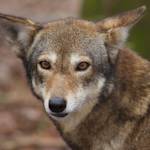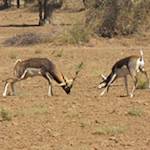Sable Antelopes, Frederick Courteney Selous
1873 CE • Matabeleland, Zimbabwe
"But below us, as far as one could see down the valley, the open ground was presently alive with game. One after another, great herds of buffaloes emerged from the forest on either side of the valley and fed slowly down to the water. One of these herds was preceded by about fifty zebras and another by a large herd of sable antelopes. Presently two other herds of sable antelopes appeared upon the scene, and a second herd of zebras, and five magnificently horned old koodoo bulls, whilst rhinoceroses both of the black and white species (the latter predominating in numbers) were scattered amongst the other game, singly or in twos and threes all down the valley.”
Frederick Courteney Selous, African Nature Notes and Reminiscences (London: Macmillan and Co., 1908), 134.
Image: Waterfalls in Rhodesia, between 1890 and 1925, courtesy of The Library of Congress, LC-USZ62-97834.


Learn about Maya Lin’s fifth and final memorial: a multi-platform science based artwork that presents an ecological history of our world - past, present, and future.

Discover ecological histories and stories of former abundance, loss, and recovery on the map of memory.

Learn how we can reduce our emissions and protect and restore species and habitats – around the world.

See how art can help us rethink the problems we face, and give us hope that each one of us can make a difference.

Help make a global memorial something personal and close to home. Share your stories of the natural world.


